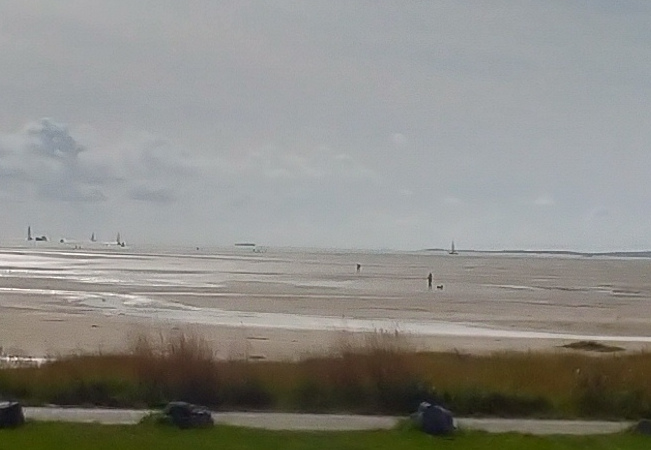Closely related to climate change, and just as important, this is becoming a major issue worldwide. Basically, land that becomes contaminated with salt is difficult or impossible to decontaminate, and can no longer be used for agriculture. It’s happening all over the world, and it’s receiving the same kind of lip service we’ve given to climate change. Many people are vaguely aware of it, scientists are concerned, large numbers of people are being silently displaced, and no real action is being taken.
I will probably write more on this in the future, but I thought I would get started with a short introductory post.
Salt can find it’s way into agricultural land in several ways, and it’s almost always related to other environmental degradation. It can be for example from overuse of underground fresh water, that becomes displaced with salt water. One of the most currently pressing ways is in coastal areas, because of rising sea levels, as a result of climate change.
For example in the east coast of the US, drainage canals built 100 or more years ago to drain farmland are now being inundated with sea water, and are bringing the salt inland. As the seas rise they are also causing soil erosion, and the destruction of woods and other nature areas as the salt works it’s way into the soils.
Here in The Netherlands we have a very complex problem with dikes, drainage canals and underground drinking water. For a long time now the problem has been seen as the need to build dikes and canals, in order to keep the land dry and protect the people and farms. It’s really only in the last 10-20 years that there’s been an understanding that the situation is much more complex than that. As dikes are built, water drained and underground drinking water consumed, the entire country sinks and salt enters farm land and drinking water. This means more dikes, drainage and water treatment are needed, and when combined with rising sea levels it’s clear a very unsustainable situation is developing. Unless a different approach is taken, serious and possibly compounding and irreversible problems are expected to develop in the next 50-100 years.
Coastal Areas and River Deltas
Two areas in the spotlight at the moment are the Mekong Delta in Vietnam and the coastal areas of Bangladesh.
River deltas have ecosystems very vulnerable to sea level rises and climate change, and the Mekong Delta is one of the worst hit. Hundreds of thousands of people are currently in the process of being displaced. Many are giving up farming and moving to cities in Vietnam, but it’s expected many more people will soon be displaced worldwide from this region. This may soon become one of the largest sources worldwide of refugees.
Bangladesh is experiencing a similar problem in it’s coastal areas.
One of the most vulnerable areas in The Netherlands is this river delta:
There are two things you should notice here. One is the line dividing two Dutch provinces (Groningen and Friesland) going down the middle of the delta, creating two jurisdictions. The other thing is the river delta has a dike closing the end of it. Both of these are indications the river delta lies at the center of a very long established cultural dispute, with people in the two provinces having very different perspectives. The Netherlands also has a history of making decisions based on consensus, meaning decision making here is very difficult and often more based on emotions than facts. This is a very serious problem at the moment.
Some Issues
I don’t want to get into the divisions that exist here very much, but in broad strokes a lot of them are familiar to all of us. For example, should we focus on technology based solutions, or should we pursue a more natural direction and focus on restoring nature. For example there are a lot of farmers in the area, and many of them are arguing over the benefits of pesticides and fertilizers, vs organic farming.
One of the organizations involved in the conference was the Salt Farm Foundation. They are working hard getting the information about salt tolerant crops out to people, and helping farmers find solutions to soil salinity, especially before it gets too serious. The come from a background of organic and biodynamic farmers.
Saline Futures Conference
I recently attended the Saline Futures Conference, organized by the Waddenacademie in The Netherlands. A book of abstracts as well as some plenary session videos and pictures taken during the conference are available on their website.
Excursions
I took two excursions as part of the conference, to the Dutch islands of Texel and Terschelling. It was particularly nice getting what would have been a visit by a tourist, but in this case guided by local people. The ecosystem in the area is really interesting, with many of the salt tolerant crops used by the Salt Farm Foundation growing in the wild. We had lunch from some of these on Terschelling at Flang’s cooking studio.
We also had a great lunch on Texel at the information center of Salt Farm Texel, also with many salt tolerant crops.

The picture above is the view off Terschelling at low tide, showing both boats in the distance as well as people walking on the mud flats.

